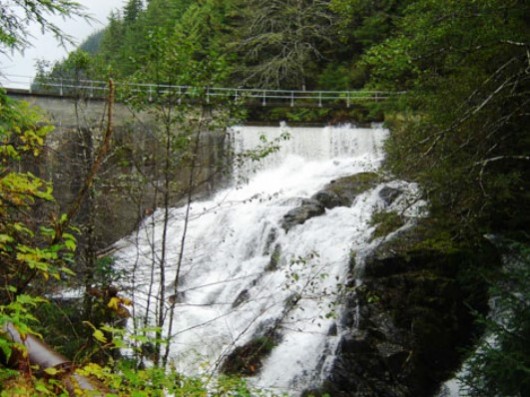The Senate Appropriations Committee on Thursday approved a spending measure for the federal Interior Department that Alaska Sen. Lisa Murkowski’s office said includes some good news for Southeast.
Matthew Felling is a spokesman for Murkowski. He said the Interior Department manages more than half the land in Alaska and has jurisdiction over Indian Health Services and the Bureau of Indian Affairs. He said the senator, who chairs the Interior appropriations subcommittee, has tried to direct funding in a way that works better for Alaskans.
Among the items is some potential relief for recreation funding on the Tongass and Chugach National Forests. The U.S. Forest Service has seen cuts to recreation over the past few years, and has had to reduce trail maintenance and other recreation-related services.
Felling said there’s not an increase to recreation funding overall, but direction was given to reallocate those funds.
“She included language inside the Interior appropriations bill that directs the Forest Service to revise this unfair regional funding formula that’s hitting Alaska so hard in Region 10, so it’s in line with funding nationwide for Forest Service recreational activities, instead of us being left out,” he said.
Felling said the Interior appropriations bill also addressed timber harvest, and the move toward second-growth sales. The bill requires the Forest Service to, within two years, plan enough old-growth timber sales to keep the timber industry alive during the transition.
He said it also requires the Forest Service to amend the Tongass Land Management Plan to include a transition and an inventory of young growth stands available for future harvest.
Another part of the appropriations bill deals with the federal Environmental Protection Agency and a “Waters of the U.S.” rule, which Felling said has been completely de-funded.
He said that rule widens the definition of waters that need to be protected.
“The EPA took such a blunt instrument with this Waters of the U.S. rule,” he said. “They are requiring a huge bureaucracy be added to any project where it is done within 4,000 feet – that’s three-quarters of a mile – of the high tide line or ordinary high-water mark.”
Felling said that rule would cause problems even in the Lower 48, where farmland often is close to streams. In Alaska, he said, it would pose problems pretty much everywhere, especially for future hydroelectric power projects.
Speaking of hydroelectric projects, on Friday, Murkowski’s office sent out a news release announcing that she had just introduced a bill that would give the Mahoney Lake Project a 10-year permit extension to give more time for the partners to secure funding.
Mahoney is a cooperative project between Saxman and Alaska Power and Telephone. Once built, it would provide an estimated 41.6 gigawatts of power.
That bill has just been introduced, so still needs a committee review. The Interior appropriations bill should go to a floor vote in the next couple weeks.






